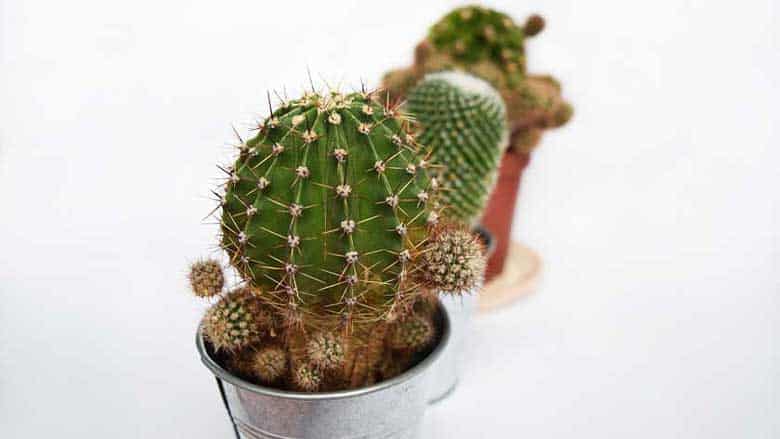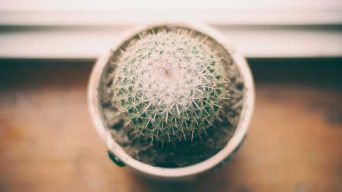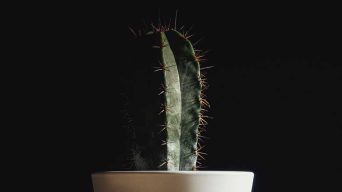Cacti are a popular houseplant for many reasons. They’re easy to care for, and they don’t need much water. However, a common problem in cacti is etiolation.
Etiolation is when cacti are not getting enough light, and their stems curl up.
Etiolated cacti often grow tall, as if trying to stretch towards the light. This is a condition that causes the cactus to become thin and pale.
The cactus will lose its natural color, have an unhealthy appearance, and be more susceptible to diseases such as root rot or stem rot.
Etiolation can be difficult to prevent if you don’t know what it is or how to recognize the symptoms.
This article will help you identify the problem, treat it, and prevent it from happening in the future.
What is Etiolation in Cacti
Etiolation is common in cacti and succulent plants.
Etiolated cacti are plants that lose their natural color and become thin. They grow tall and lose their natural shape.
Cacti with etiolation are more susceptible to diseases such as root rot or stem rot.
Cactus and Succulent etiolation is a condition typically caused by lack of sunlight, low humidity, or poor soil quality.
These factors make it difficult for the plant to photosynthesize, which causes it to grow weaker over time.
Plants will also not have enough chlorophyll to protect themselves from the sun’s UV rays.
Etiolation is a condition that can be difficult to detect as it does not have any observable symptoms until after some time has passed.
This is why you need to monitor your plants for signs of etiolation at least once every two weeks and keep an eye out for any issues that could provide a cause for this condition.
What Causes Cactus Etiolation?
Mainly, etiolation occurs when a plant does not get enough sunlight or cannot absorb all of the sun’s energy because something is blocking its access to direct light, such as nearby foliage.
Cactus plants need lots of bright, direct sunlight for healthy growth, so they are especially susceptible to light deprivation.
The sun’s rays must hit every surface evenly so that no part of the stem goes without exposure. This can happen if you have a lot of other vegetation around your cactus houseplant.
However, besides light, several other factors and causes to consider can cause an etiolated cactus.
The following are the most common causes of etiolated plants:
Lack of Sunlight
Plants will grow weaker over time if they do not get enough light.
This is typically caused by a lack of sun exposure due to cloudy or rainy weather.
But it can also be related to growing in low-humidity areas or planting them close together.
Low Humidity
Low humidity tends to dry the cacti.
Sometimes, your plant might dry out during specific periods. In that case, it will help if you increase its humidity level by misting or creating an enclosed terrarium for them.
You may also want to use water sparingly on these species to avoid this problem.
Too Much Fertilizer
Plants will grow weak if they are fed too much fertilizer, which can cause them to put on extra weight and not be able to support themselves.
This eventually leads to etiolation due to the overgrowth of roots that don’t receive enough sun exposure.
Not Enough Light Periods
The cactus needs at least 12 hours of light every day (though 14 or more is recommended) to bloom appropriately during the spring and summer months when there’s so much sunlight available.
When you’re growing your plant inside with artificial lights but neglecting its natural need for outdoor time, this could also lead to an etiolated growth.
Not Enough Watering
Some cacti can’t handle the dry desert conditions and will need to be watered more often.
These plants are also susceptible to etiolation since they’re not able to photosynthesize as well in a low water environment.
How to Recognize an Etiolated Cactus
A healthy cactus grown in full sun for many years will be darker green with a light and fluffy appearance.
These plants also have thicker stems, which indicates how much water they can store from the summer rains.
This helps them last through the winter season without having their leaves shrink or wither away.
When it comes time to bloom in spring, these plants will grow more than one flower on each stem.
Contrary to a healthy cactus, an etiolated cactus has an overall unhealthy appearance.
The main symptoms of an etiolated cactus are:
Lack of Growth
The plant’s normal growth is stunted, and it doesn’t grow as tall or wide as other cacti.
Spindly Stems
Cactus stems are usually thick, but they can become thin and brittle and start to snap easily in an etiolated state.
This often occurs on one side first before spreading to the whole stem until there’s no support left for the rest of the plant, which will then topple over, too.
Uneven Set Leaves
Your cactus might have its leaves set unevenly along its body (in contrast to the usual perfect symmetry), and its color may be a little off, too.
Inflated Stems
The stems of an etiolated plant will often look inflated, like it has swollen up with fluid. The air chambers inside them have grown significantly to provide more support for the plant’s weight.
Drooping Leaves
When leaves droop on your healthy plant, they usually point down towards the ground.
Still, in this situation, they’ll dry out first before slowly starting to slant away from its stem until you notice that they’re pointing upwards instead.
Roots Stick Outside the Pot
The most common reason for etiolation in cacti is due to a lack of light. Still, it can also be caused by overwatering.
When the roots are sticking outside of the pot, this might indicate that there’s not enough drainage, water less frequently, and don’t leave them sitting in any standing water!
Leaves Become Dry, Brown, or Yellow
If your cactus plant is etiolated, then you’ll know when the leaves start to dry out and turn brown.
If it’s not getting enough light, then this will happen quickly. Still, if it’s an overwatering issue with roots sticking outside of the pot, they may turn yellow before turning brown.
Cacti Start Dropping Some Spikes
When a cactus starts dropping spikes on its own without being touched by anything that could cause them to fall off, there might be something wrong with how much sun exposure the plants are receiving.
Cacti Lose Their Natural Shape
The most common symptom of etiolation is the plant losing its natural shape. Known as etiolated growth, it will begin to stretch in search of light sources.
It’s still green, but it won’t have a strong trunk and branches like before.
One Side of the Plant is Thicker Than the Other
Sometimes cacti can become lopsided when they are not being watered enough.
This happens because the roots will grow in different directions and therefore have very uneven water distribution, which eventually causes one side to be thicker than the other.
How to Treat Cactus Etiolation
When a cactus is etiolated, you won’t be able to restore it to its original form. Still, you can try to reverse the process and make it healthier.
Some things you can do to treat an etiolated cactus are:
Reduce the Amount of Water
When a cactus is overwatered, the roots will grow outwards, searching for water and away from nutrients.
Therefore if you reduce watering time, there should be more balance between root growth and nutrient absorption.
Increase Exposure to Sunlight
Etiolation happens when plants do not have enough light or are exposed to too much direct sunlight while being planted outside.
If etiolation has only just begun, then increasing the exposure to sunlight might make them less stretched looking again. Still, they won’t go back to their original shape, unfortunately.
Move Your Cacti Outside
When a cactus was recently moved into an area with little natural light conditions, it may start showing signs of etiolation.
If this is the case, it might be recommendable to move your plant outside.
Move it to a shadier area or place them in front of natural light coming from windows if you don’t have any other space for it outdoors.
Provide More Oxygen
Sometimes etiolation can happen because there’s not enough air circulation around your plants (especially when they are all bunched up).
Make sure that some leaves and stems are always touching an open spot which will allow better circulation.
Remove Any Damaged Leaves and Stems
Sometimes this condition can come from damage done to the leaves and stems of a cactus.
The best way to treat this would be to remove any damaged parts immediately before they rot or get infected with bacteria. Use a fungicide spray if you want prevention measures taken against future problems.
Trimming
The easiest way to treat etiolated cacti is by trimming them.
If you cut the ends of the plants, it will allow more bright light to reach their roots which will help strengthen them and bring back their natural shape.
How to Prevent Cactus Etiolation
With the proper care, etiolation can be prevented. It’s essential to keep in mind that cacti are desert plants, and they need a lot of light.
When you live indoors or have an area with insufficient light, it’s best to get it outside as often as possible. This way, your plant will receive the sun rays it needs for photosynthesis (growing).
The other way to prevent etiolation from happening is by providing enough water, but make sure not too much water gets on one.
Lastly, it is important to make sure that your cactus receives the nutrients it needs.
When you feed a cactus properly and provide sufficient light for photosynthesis, your plant will grow tall with strong branches of green or yellow spines.
This should help prevent etiolation from occurring in the future!
Final Thoughts
Cactus etiolation is a common problem among cacti.
However, there are ways to prevent and treat it from happening.
With the proper care, your cactus should grow tall and strong.
All you need is the right amount of light, water, and nutrients for your cactus.







